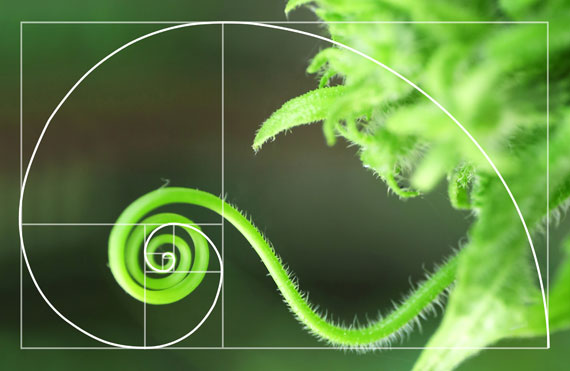If you have been using The Rule of Thirds in your photographic compositions, you may have discovered an inherent shortcoming. Composing for the Rule of Thirds involves lining up a subject with one of the recommended intersections or lines. This can sometimes result in the subject being crowded too close to the edge of the frame.
The problem can be minimized, if not eliminated using the Golden Ratio Grid, rather than the standard equally spaced Rule of Thirds grid.
What is the Golden Ratio?
It is worth while taking a look at what the Golden Ratio is before applying it. The concept was discussed as far back as 300BC as being mathematically interesting, and in addition to being called the Golden Ratio it is also referred to as the Golden Mean or Divine Proportion.
In simple terms, it refers to two measurements where the ratio of the sum of both measurements and the largest measurement is the same as the ratio of the largest and the smallest. In other words a + b / a is the same as a / b. This ratio is 1 to 1.618 and is often quoted to be found in nature, architecture, art and music amongst other things.
The mathematics of the Golden Ratio was further explored by a man called Fibonacci to deliver the Fibonacci Sequence of numbers. Start with 0 and 1 then progressively add the previous two numbers together to obtain the next. The sequence would progress as 0, 1, 1, 2, 3, 5, 8, 13, 21, 34, 55, and so on. The interesting thing is that the further the progression advances, the closer to the golden ratio becomes the result of dividing the next to the last number in sequence by the last number in sequence. For example, 55/34 is 1.617647…, and the result of 233/144 is 1.618055…
This sequence is used to generate another composition variation called the Golden Spiral. There are opinions that this spiral can be seen in a Nautilus shell, the seeds on a pine cone, and even the arms of the milky way. Such is the interest in the Golden Ratio that many regard it as the universal constant that all things in life relate to in one way or another.
How Do You Apply the Golden Ratio to Your Photos?
One simple way to apply the Golden Ratio is to apply it to a rule of thirds grid. But, instead of the three columns and rows being of equal width and height, the center column and row is 0.618 the measurement of the other two. If you place a subject at a row/column intersection now, you effectively move the subject further from the edge of the image frame, giving the subject more space.
You can also employ the Golden Spiral to place the main point of interest within the inside of the spiral. The spiral is created from the Fibonacci sequence, which when plotted as a series of Golden Rectangles with a series of arcs drawn within the rectangles, results in the spiral overlay. You can see this graphically represented on my website. Adobe Lightroom provides composition overlays for the Golden Ratio grid and for the Golden Spiral.
About the Author:
Terence Starkey is an avid photographer from SLRJourney. Getting your new digital camera is generally a major happening. An event filled with excitement because now you have some serious technology in your hands. It is also a time of anticipation of the myriad of possibilities now open to you in the world of photography, and the journey you find yourself embarking upon.
Like This Article?
Don't Miss The Next One!
Join over 100,000 photographers of all experience levels who receive our free photography tips and articles to stay current:











I look at these rules as starting guidelines for a “pleasant” composition. It’s up to the photographer to put his style into his work. Good article, good reminder of these helpful “rules”.
Changing your choice of ‘rule’ does not make poor composition better. People would be a lot better off if they concentrated on content rather than style.
I hate to break this to you, but the golden ratio is encumbered with myths, and is much abused. The nautilus doesn’t follow the golden spiral. Do read more about it here:
http://www.lhup.edu/~dsimanek/pseudo/fibonacc.htm
To quote Ansel Adams: “There are no rules for good photographs, there are only good photographs”
Totally agree. The spiral in the snail shell is just a common spiral, definitely not as extreme as the “golden” one.